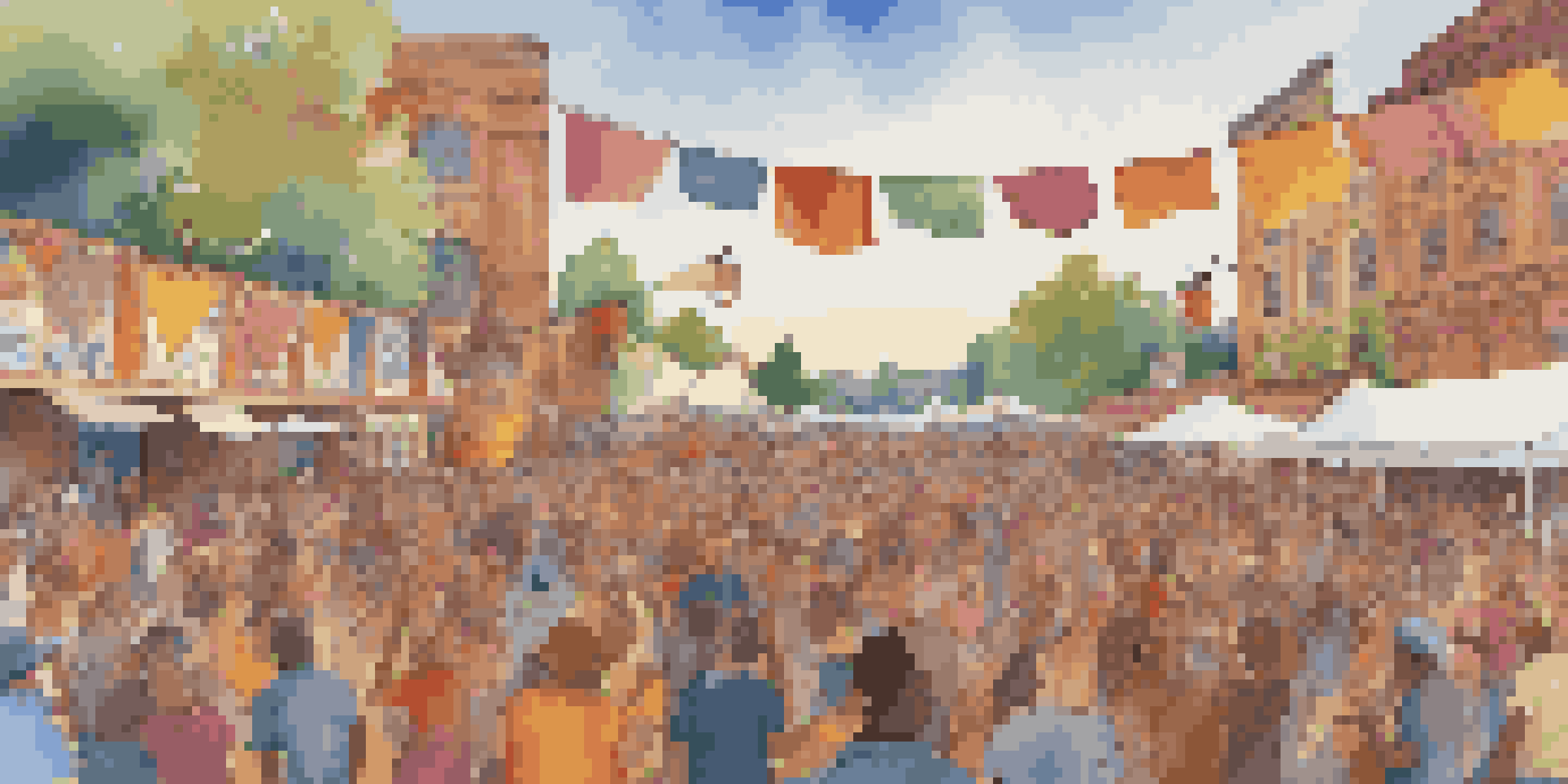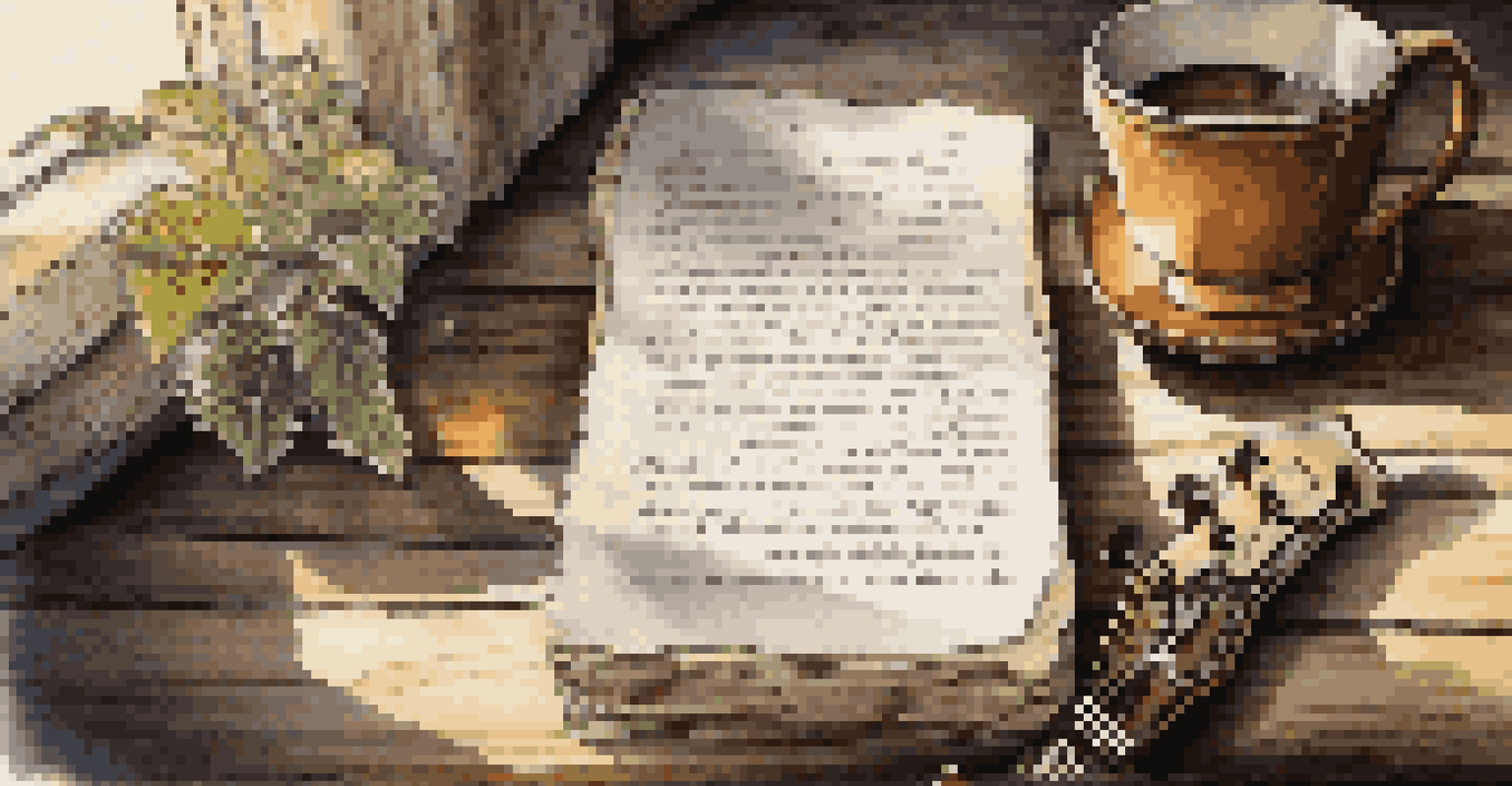Gender and Identity in Contemporary Folk Music

The Evolution of Folk Music and Its Cultural Significance
Folk music has always been a reflection of the society from which it emerges, often telling stories of everyday life and struggles. Over the years, it has evolved, adapting to the cultural shifts and changes in societal norms. Today, contemporary folk music serves as a powerful medium for individuals to express their identities, especially regarding gender.
Music is a safe place for people to explore their identities, and folk music has always been about storytelling and connection.
As we navigate through the complexities of modern society, folk music allows artists to articulate their experiences and challenge traditional gender roles. This genre becomes a canvas where musicians paint their narratives, often merging personal stories with broader social commentary. For instance, songs may explore themes of gender fluidity or the challenges faced by marginalized communities.
By revisiting historical folk traditions and infusing them with modern perspectives, artists contribute to an ongoing dialogue about identity. This blend of the old and new enriches the genre, inviting listeners to reflect on their own understanding of gender and the broader implications within society.
Key Artists Shaping Gender Narratives in Folk Music
Numerous contemporary folk artists are breaking barriers and reshaping the narrative around gender through their music. For example, artists like Brandi Carlile and Amanda Shires have embraced their identities and used their platforms to discuss issues such as LGBTQ+ rights and mental health. Their authenticity resonates with audiences, fostering a sense of community and understanding.

Moreover, these artists often collaborate with others from diverse backgrounds, further enriching the folk music landscape. This unity not only amplifies marginalized voices but also highlights the shared human experience, making the conversation around gender more inclusive. In doing so, they challenge listeners to confront their biases and reassess their perspectives.
Folk Music Reflects Identity Changes
Folk music evolves with society, capturing personal and cultural stories, particularly around gender identity.
By weaving personal stories into their lyrics, these musicians create a safe space for others to explore their identities. This approach not only normalizes conversations around gender but also empowers individuals to embrace their true selves, leading to a more accepting and open-minded society.
The Role of Lyrics in Expressing Gender Identity
Lyrics are a powerful tool in folk music, serving as both a reflection of personal experiences and a commentary on societal norms. Many contemporary folk songs delve into the complexities of gender identity, using storytelling to bring awareness to issues that often go unaddressed. Through vivid imagery and relatable narratives, these songs resonate with listeners on a deeper level.
The beauty of folk music is that it evolves with society, capturing the nuances of identity and experience.
For example, a song might tell the story of someone grappling with their gender identity, using metaphors that make the struggle relatable to a wide audience. This approach not only educates listeners but also fosters empathy and understanding, bridging gaps between different experiences. The emotional weight carried by these lyrics can be both cathartic for the artist and enlightening for the audience.
As folk musicians continue to explore these themes, they offer a platform for dialogue that challenges traditional notions of gender. By addressing these topics openly, they encourage listeners to engage with their own identities and the identities of others, promoting a culture of acceptance and support.
Community and Connection Through Folk Music
Folk music has always had a communal aspect, bringing people together through shared experiences and stories. In contemporary settings, this sense of community is essential for individuals exploring their gender identities. Music festivals, gatherings, and open mic nights provide safe spaces for self-expression and connection, fostering inclusivity and support.
Artists often share their journeys with their audiences, inviting listeners to reflect on their own experiences. This communal sharing creates a sense of belonging, where individuals can find solace in knowing they are not alone in their struggles. The relationships formed through these shared musical experiences can be transformative, encouraging individuals to embrace their authentic selves.
Artists Challenge Gender Norms
Contemporary folk musicians like Brandi Carlile and Amanda Shires use their platforms to discuss gender issues and foster community.
Moreover, the community aspect of folk music often extends beyond the music itself, with events serving as platforms for activism and social change. By coming together, individuals can advocate for gender rights and equality, further solidifying the genre's role as a catalyst for societal transformation.
Intersectionality in Folk Music: Many Voices, Many Stories
The concept of intersectionality emphasizes that individuals experience overlapping identities, which can influence their experiences and perspectives. In contemporary folk music, this idea is increasingly embraced, leading to a richer tapestry of narratives that reflect diverse gender identities and experiences. Artists are now more aware of how race, class, and sexuality intersect with gender, allowing for a more holistic view of identity.
For instance, musicians from various cultural backgrounds incorporate their unique experiences into their music, highlighting how different factors shape their narratives. This intersectional approach not only broadens the scope of folk music but also challenges the notion that gender identity exists in a vacuum. By sharing their multifaceted stories, these artists encourage listeners to understand the complexity of identity.
As more artists embrace this intersectionality, folk music becomes a platform for underrepresented voices, fostering a sense of solidarity among diverse groups. This inclusivity enriches the genre, making it a powerful force for social change and a means of promoting understanding across different identities.
The Impact of Social Media on Folk Music and Gender Expression
In the age of social media, artists have more opportunities to share their music and connect with audiences on a personal level. Platforms like Instagram, TikTok, and YouTube allow musicians to showcase their work, share their stories, and engage in conversations about gender identity. This increased visibility has led to a rise in diverse voices within the folk music scene.
Social media also serves as a tool for activism, enabling artists to raise awareness about important issues affecting gender identity. By sharing their experiences and insights online, they can reach a broader audience and spark meaningful discussions. This democratization of music allows for a more diverse range of narratives, promoting acceptance and understanding.
Social Media Amplifies Diverse Voices
Platforms like Instagram and TikTok enable folk artists to share their narratives and connect with audiences, enhancing discussions about gender identity.
Additionally, social media creates a sense of community among fans, where individuals can connect over shared experiences and support one another. This virtual camaraderie reinforces the themes of belonging and acceptance found in folk music, ultimately fostering a culture where individuals feel empowered to express their gender identities.
Looking Ahead: The Future of Gender and Folk Music
As contemporary folk music continues to evolve, the conversations around gender and identity are likely to grow even more dynamic. With a new generation of artists emerging, we can expect a broader range of voices and stories that reflect the complexities of modern identity. This evolution will not only enrich the genre but also challenge listeners to confront their own beliefs and biases.
Moreover, the ongoing dialogue about gender in folk music may inspire other genres to explore similar themes, creating a ripple effect across the music industry. As artists push boundaries and experiment with new sounds and narratives, the impact of these conversations will extend beyond folk music, influencing broader cultural discussions.

Ultimately, the future of gender and identity in contemporary folk music holds tremendous potential for growth and change. By continuing to embrace diverse voices and experiences, this genre can remain a powerful tool for social commentary and a means of fostering understanding and acceptance in an ever-changing world.